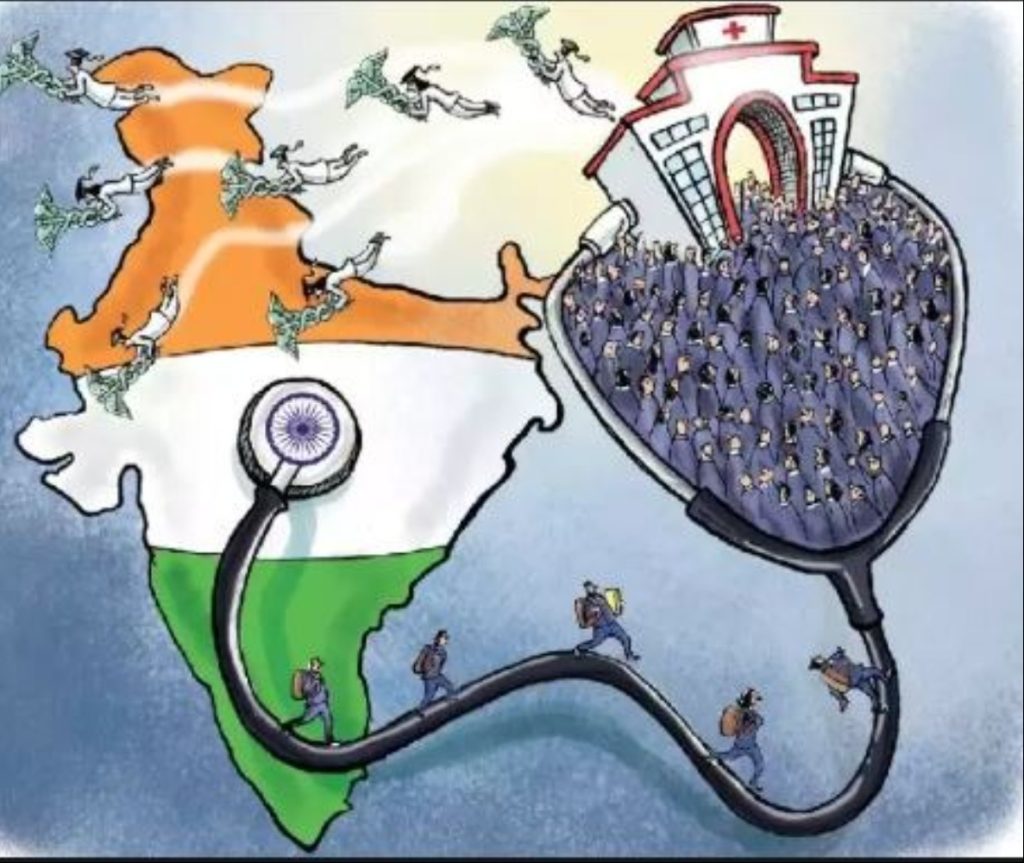Responsibility for the governance, financing, and operation of the health system is divided between the central and state governments.

Under India’s decentralized approach to health care delivery, the states are primarily responsible for organizing health services. Because of severe shortages of staff and supplies at government facilities, many households seek care from private providers and pay out-of-pocket. To subscribe please click tau.id/2iy6f and access our live channel.
ALSO READ: Juvenile Diabetic and Board Exams: A Welcoming Change
Facilities for the System
For low-income people, the government recently launched the tax-financed National Health Protection Scheme (Ayushman Bharat-Pradhan Mantri Jan Arogya Yojana, or PM-JAY), which allows them to also get cashless secondary and tertiary care at private facilities.
There are also a handful of health insurance arrangements for specific population groups like government employees and factory workers. Private voluntary insurance is available, but uptake is limited. Apart from insurance, all Indian citizens can get free outpatient and inpatient care at government facilities.
How The Coverage Works
The constitution of India obliges the government to ensure the “right to health” for all. Each state is required to provide free universal access to health care services.
Historically, there have been several government-funded health insurance schemes intended to improve coverage for specific population groups, with variations across states.
One important scheme aimed at reducing financial catastrophe and vulnerability for lower-income populations is the National Health Insurance Program (Rashtriya Swasthya Bima Yojana, or RSBY), launched in 2008.
In March 2018, the central government approved the implementation of PM-JAY. This flagship public health initiative has been internationally recognized as a significant step toward achieving universal coverage in India.
The initiative offers hospital coverage for the 40 percent of the country’s population that is poor or low-income. The other important initiative is to bolster preventive and promotive health care services by revamping existing primary health facilities into Health and Wellness Centres.

Roles of the Government
At the federal level, the Ministry of Health and Family Welfare has regulatory power over the majority of health policy decisions but is not directly involved in health care delivery.
The Department of Health and Family Welfare is responsible for organizing and delivering all national health programs, with each program headed by its own administrative body.
The Department of Health Research is responsible for promotion of health and clinical research, development of health research and ethics guidelines, outbreak investigations, and provision of advanced research training and grants for such training.
In 2014, the government established the federal Ministry of Ayurveda, Yoga and Naturopathy, Unani, Siddha, and Homeopathy. It develops and promotes research in alternative medicine practices.
At the state level, the Directorates of Health Services and the Departments of Health and Family Welfare are responsible for organizing and delivering health care services to their populations.
These include all medical care, from primary care and pharmacies to secondary and tertiary hospital care with state bodies also responsible for control of food and drug quality, provision of federally funded national health programs, collection of health information and statistics, promotion of alternative medicine practices, and more.
An important social health insurance scheme is the Employees’ State Insurance Scheme, which is organized by the Ministry of Labour and Employment for the workforces of companies with 10 or more employees.
The scheme has been extended to companies in other industries, such as hotels, restaurants, transportation companies, newspaper establishments, and cinemas. This is India’s only true health insurance scheme to which both employees and employers contribute.
Finances for the System
Some initiatives are governed and/or financed jointly by the central and state governments, such as the National Health Mission, a family welfare and population control initiative.
At the district level, Panchayati Raj (local governance) institutions are responsible for grassroots governance and administration in rural villages.
These government bodies play a significant role in establishing primary health centers, and contribute to various social policies in such areas as education, agriculture, and transportation.
Financial Scheme by the Centre
There are various public insurance schemes, including RSBY, which provides hospital coverage for most diseases and pre-existing health conditions for individuals living below the poverty line.
The new National Health Protection Scheme is for individuals in the bottom two income quintiles. This scheme provides INR 500,000 (USD 7,007) per family per year to cover secondary and tertiary health services, from inpatient to post-hospitalization care.
The scheme extends coverage to approximately 100 million poor and vulnerable families. Beneficiaries are auto-enrolled in the system and, therefore, are able to obtain benefits as cashless transactions.
Apparently, public sector undertakings (state-owned enterprises) and autonomous government bodies like central and state universities offer health coverage to their employees.
Another important health coverage scheme is the Central Government Health Scheme, organized and run by the Ministry of Health and Family Welfare for current and retired central government employees and their dependents.
Coverage includes health care services for allopathic, homeopathic, and alternative medicine treatments. Approximately 3.6 million beneficiaries were registered under this scheme as of late 2019. Similar schemes exist for railway and defense employees.
Strategies for Quality Care
The National Accreditation Board for Hospitals and Healthcare Providers is responsible for accrediting all types of health facilities. This board is a member of the International Society for Quality in Health Care, along with countries such as Australia, Canada, Egypt, Hong Kong, and the United Kingdom.
Structural quality is also ensured through mandatory continuing medical education (CME), instituted by the Medical Council of India. A centralized tracking system for district hospital performance was introduced along with public rankings of hospitals in the system based on performance.
Facilities that earn certifications receive financial incentives. Facilities can also get technical and capacity-building support to improve their performance through training, workshops, and courses offered by the National Health Systems Resource Centre.
The Ministry of Health and Family Welfare has published some national standard treatment guidelines related to hospital planning, blood transfusion, and electronic health records. The National Centre for Disease Control has also published some national guidelines for the management and control of infectious diseases, as well as operational manuals for health care workers treating patients with infectious diseases.
Major Innovations and Reforms
- Initiating the provision of universal sanitation coverage and making the country open defecation–free through the Swachch Bharat Mission.
- Launching Intensified Mission Indradhanush 2.0 to achieve 90 percent vaccination coverage for children under 2.
- Providing clean cooking fuel under the Pradhan Mantri Ujjwala Yojana scheme.
- Replacing the Medical Council of India with the National Medical Commission and setting uniform standards for medical education.
- Providing nutritional and social support for all National Health Protection Scheme beneficiaries with tuberculosis.
- Creating a health technology assessment body (Health Technology Assessment in India) under the Department of Health Research to evaluate all medical technologies.
Conclusion
India has emerged as a leading destination for medical tourism due to the relatively low cost of medical procedures, the availability of skilled doctors, and advanced technology. Factors such as cost-effective treatment, advanced technology, a wide range of specialities, alternative medicine, English language proficiency, and ease of travel have contributed to India’s growing medical tourism industry.
The Indian healthcare system has made significant progress in recent years. The positive transformation of the Indian healthcare system involves a range of changes and initiatives. Despite challenges, the continued investment in healthcare and innovation provides reasons to be optimistic about the future of healthcare in India.




